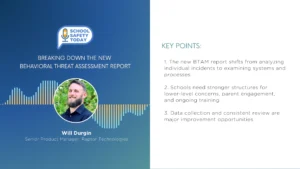3 Keys to Success for Using Cloud Solutions in Higher Ed
Like a wide range of industries, higher education institutions have adopted cloud solutions that offer a variety of immediate and longer-term benefits specific to the needs of universities and colleges.
Cloud computing is especially effective in supporting content services platforms that aggregate documents and information across multiple repositories to connect disparate applications. Content services are integral elements of a comprehensive digital transformation strategy, according to Gartner.
By moving to the cloud, higher education institutions can support the current shift to virtual learning, which may become a long-term trend and give IT staff more time to focus on improving the student experience and ramping up virtual learning programs. In addition, cloud access enables remote, work-from-home processes and empowers staff by providing access to information with intuitive experiences on any browser or device, from any location
An IDG survey of CIOs, CTOs and other technology leaders companies with 250+ employees found three top three reasons to adopt cloud solutions – all directly relevant for higher education.
• Disaster recovery. Sometimes, the worst happens. Cloud solutions offer better disaster recovery capabilities, including the ability to replicate content in multiple locations. For higher education, that means students and staff can get up and running as soon as possible after an emergency.
• Data availability. Like any organization, colleges and universities need 24/7 access to mission-critical information where and when they need it – as soon as they need it. Cloud solutions can increase uptime.
• Cost savings. Compared with on-site hosting of software solutions, hosting in the cloud reduces operational costs, including staffing, overtime, maintenance and physical security. With higher education institutions under pressure to contain costs, cloud hosting offers a way to stretch your budget.
Cloud-based content services deliver value whether they are used in a single department or across the campus. For instance, John Carroll University (JCU) in Ohio wanted to eliminate manual, low-visibility tasks in its academic petition process through which students request and seek review of academic overrides and petitions. JCU implemented cloud solutions to improve processes and reap the benefits without extensive training required. That allows the university to invest more in professional development rather than installing software on each user’s computer.
Three keys to success in the cloud
Because of these benefits, the options and choices relating to cloud technology have expanded significantly. Nearly every content services provider offers a cloud platform. In evaluating options, here are three factors to consider in choosing the right partner:
1. Ability to meet needs across the campus. An integrated set of capabilities helps reduce reliance on overlapping point solutions as well as data fragmentation. Administrators need simple, configurable tools that empower them to easily build solutions and integrations with core applications. By giving systems the ability to share data, end users focus on students instead of searching for information.
2. Easy upgrades. Cloud-based technology should enable convenient, frequent releases and a streamlined upgrade process. This is especially important when an institution may have deployed multiple solutions. Scalability is key to ensuring all users can access the best, latest versions. Even for institutions that may have just a few solutions deployed, a hosted infrastructure enables institutions to move more quickly than a system managed on-premises. By increasing deployment speed, institutions enhance ROI.
3. Preventive accountability. When there are problems at the campus data center, it is essential to minimize downtime – and that need increases with each solution deployed. A comprehensive solution should provide a full suite of safety and security features, including disaster recovery, data availability, incident response, geographical disbursement, and access to experts. It’s essential that your partner offer secure data centers around the world to deliver 99.99 percent uptime and availability. You need a seasoned team of cloud professionals available 24/7/365 to provide you with oversight on governance, risk, compliance, security, network and infrastructure, database services, and support.
With the impacts of COVID-19, the technology needs of higher education institutions will continue to evolve, and many changes are likely here to stay, such as virtual classes and work-from home options. Behind the scenes, forward-looking institutions will be relying a lot less on on-premises infrastructure and a lot more on the cloud.
By making documents and information more readily and easily available, you’ll earn top grades from your end users, IT staff, and most importantly, your students.
Follow us on social media for the latest updates in B2B!
Twitter – @MarketScale
Facebook – facebook.com/marketscale
LinkedIn – linkedin.com/company/marketscale








